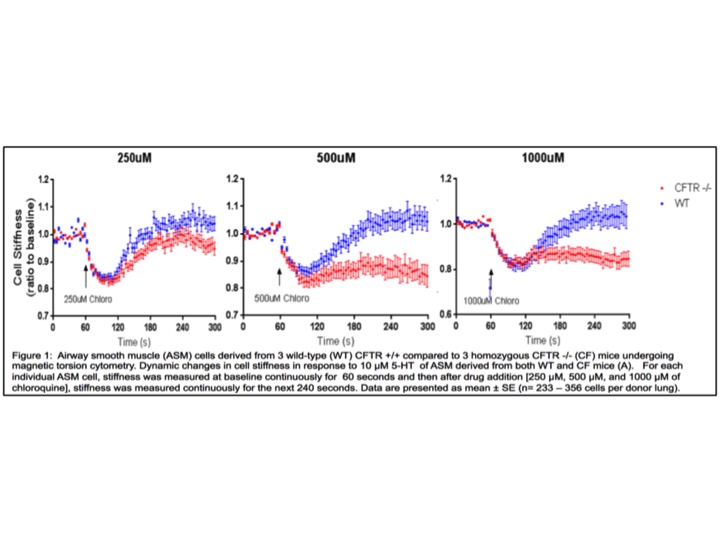GA1-52
Bitter Taste Receptor Function: Airway Hyper-Reactivity in Cystic Fibrosis
1Dalesio N, 2Huang J, 3Zeitlin P, 4Emala C, 2An S, 1Berkowitz D
1Johns Hopkins University, Baltimore, MD, USA; 2Johns Hopkins Bloomberg School of Public Health, Baltimore, MD, USA; 3National Jewish Health, Denver, CO, USA; 4Columbia University, New York, NY, USA
Background: Cystic Fibrosis (CF), a disease caused by the dysfunctional cystic fibrosis transmembrane conductance regulator (CFTR) altering chloride movement, is the most common fatal genetic disease in the US. For CF of the lung, this leads to hyper-secretion of mucus, infection, and inflammation. Approximately 50% of patients with CF also have concomitant diagnosis of reversible hyper-reactive airway disease1,2, many of whom are refractory to traditional bronchodilator therapy with β2-agonists3. There is an urgent need to investigate alternative therapies. Recently, CFTR receptors and bitter taste receptors (TAS2R) have been detected in airway smooth muscle (ASM), altering intracellular calcium signaling and causing direct relaxation on these cells. However, the functional role for TAS2Rs in CF is unknown. Methods: We conducted magnetic twisting cytometry (MTC) studies to evaluate ASM reactivity to TAS2R agonists in both a murine and human model of cystic fibrosis. Murine: Lung and tracheal tissue was harvested from 2 wild-type (WT) that are homozygous CFTR +/+ and 2 CF (homozygous CFTR -/-) mice. Tracheas were excised and placed into a cold physiologic solution where they were de-epithelialized and cultured. Studies were performed as previously described4,5. Briefly, coated ferrimagnetic beads were bound to ASM integrin receptors, magnetized and twisted in a vertically aligned magnetic field, and subsequently treated increasing doses of chloroquine, a TAS2R agonist, from 250 μM to 1mM. Human: MTC studies were performed using human ASM cells both untreated and in the presence of the CFTR inhibitor CFTRinh-172. Cells were acquired from human lung transplant donors, cultured, and underwent MTC experimentation as described above using 250 μM, 500 μM, and 1000 μM chloroquine as the bitter agonist. To create ASM cells physiologically similar to ASM cells found in CF patients, normal ASM cells were treated with 10 μM CFTRinh-172 for 5 minutes prior to MTC studies. Results: We observed an enhanced and sustained relaxation response to chloroquine in the CFTR -/- cells compared to the WT cells (Fig 1). MTC experiments performed on human ASM cells confirmed the results found in the murine ASM cells. ASM cells treated with CFTRinh-172 had greater relaxation, compared to cells not treated with the inhibitor, specifically with 500 μM had significantly greater relaxation (P < 0.02), however, relaxation plateaued at the 1mM dose. Discussion: These data indicate that TAS2R’s are functional in CF ASM cells and receptor stimulation leads to an enhanced relaxation response in CF ASM cells compared to non-CF cells. Therefore, the TAS2R has the potential to be a therapeutic target for hyper-reactive airway disease via bronchodilation through ASM relaxation. Further inquiry into the relationship between TAS2R and CFTR chloride channels is needed and will shed light onto the mechanisms with which TAS2R’s lead to ASM relaxation.
Top












